By Volker Griesser
Background: In this, the third and final installment of a three-part series excerpted from The Lions of Carentan, the 2011 book by a respected German military historian, Fallschirmjäger Regiment 6 (FJR 6) has been pushed out of Ste.-Mère-église, St.-Côme-du-Mont, and the key city of Carentan by American paratroopers of the 82nd and 101st Airborne Divisions, and is now fighting for its life against Allied fighter-bombers and an overwhelming force of U.S. soldiers who have come ashore at Utah Beach.
The Americans planned to advance from Périers toward Coutances, while the city of St. Lô would be taken from the north, in order to then drive toward St. Malo and form a cordon reaching to the ocean. But Fallschirmjäger Regiment 6 stood in the way of this plan, because they still held the key blocking positions.
St.-Germain-sur-Sèves was secured to the north by the River Sèves, and to the other sides by flooded areas. Because the village lay on a small hill, the Americans called it ‘Sèves Island.’ In the preliminary stages of what was called Operation Cobra, the U.S. 90th Infantry Division received the assignment to take this location. For this task, they were given all available artillery weapons and command of the mortar divisions of the neighboring units, and were also promised strong air support.
At 6:00 am on July 22, bombardment began on the positions of 2nd Battalion/FJR 6, which was defending the area north of St.-Germain-sur-Sèves. Two battalions of the 358th Infantry Regiment, 90th Division, advanced on the road over the river, supported by combat engineers and tanks. The Americans managed to push back the forward-deployed members of the 11th Company, and build a bridgehead at the crossing. In the open swamp terrain, the enemy had little cover, so that due to the defensive fire from 6th Fallschirmjäger Regiment’s companies to the left and right, their losses soon amounted to 200 men.
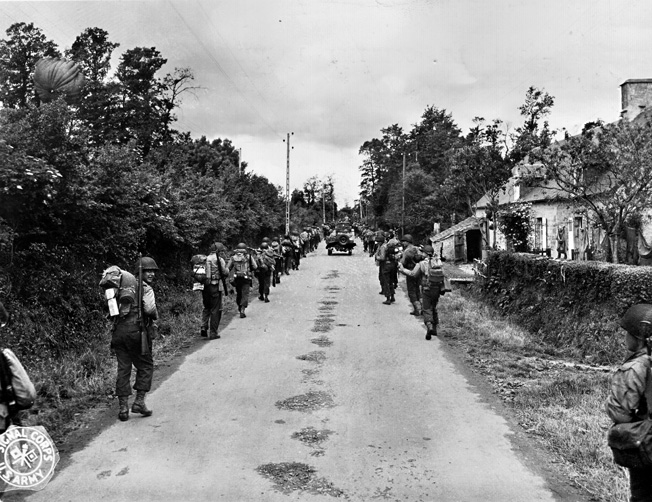
Major Friedrich August Freiherr von der Heydte, commanding officer of FJR 6, realized that the American advance had to be stopped. Because of FJR 6’s high losses in the past weeks, the only part of the regiment that was available for this responsibility was the 16th Company under the leadership of Oberfeldwebel [Platoon Sergeant] Alexander Uhlig. Because they were designated for special deployments, they stood at the ready near to the regimental command post.
Operation Sèves Island
Uhlig himself remembers: “Operation Sèves Island began for me on the morning of 22 July, with a conversation that the regimental commander had called me in for. He shared with me that in the previous night or early morning hours, the enemy had broken through our main line of resistance in 3rd Battalion/FJR 6’s sector. They needed to be pushed back immediately. There was no answer at the time to my question about the strength of the enemy. The commander hoped, however, that we were dealing with just one combat patrol that I could push back with 16th Company/FJR 6, strength 5:27 [5 officers and 27 men].
“I received complete freedom of action, the right to subordinate soldiers from other companies, and the assignment to push back the Americans over the Sèves, so that the former main line of resistance could be restored. Whenever possible, I was supposed to take two or three captives on the way so that we could learn about the details of the regiment, their units and their strength.
“I returned to the company, and let them know about the deployment. We marched off on foot towards the area of our mission. We only carried light weapons with us (rifles, pistols, submachine guns, hand grenades and rifle grenades), and thus we were well equipped for the close combat we were expecting. Because of the enemy’s ground-attack aircraft, which had control of the air space, we made slow progress.
“Around 1:00 pm, the company was bombarded with mortars in a sunken road northeast of Remeurge; three men and one Oberjäger were injured. Two men brought them back to the nearest first aid station. I had the unit spread out to go into full cover, and scouted the terrain in front of us with Gefreiter Ahlbrecht, the company messenger.
Uhlig continued: “The terrain north of the Sèves–St Germain road was occupied by the enemy to a breadth of about 800 meters. To the east of Closet I encountered a blocking position of 9th Company/FJR 6. Between the two positions our whole main line of resistance was in American hands. Unfortunately we weren’t just dealing with a single combat patrol, but with a whole unit of more than 300 men. With my few people, a frontal attack against this enemy … did not seem promising. Therefore I decided to attack the enemy’s flank in the wing where his numbers were spread the thinnest, i.e. his right flank near Sèves.
“The company crouched and crawled behind hedges and earthwork towards Sèves, along the whole length of the American breach without being noticed. When we got there, I took some of 6th Company/FJR 6 and began the flank attack around 6:00 PM; it surprised the enemy, who certainly must have been counting on a different direction of attack. Within the next three hours, the enemy was pushed back around 350 meters in close combat, and so they lost about half of their ground. During this battle we lost none of 16th Company/FJR 6. The medic could easily deal with light scratches immediately, and lightly wounded men voluntarily stayed in battle.
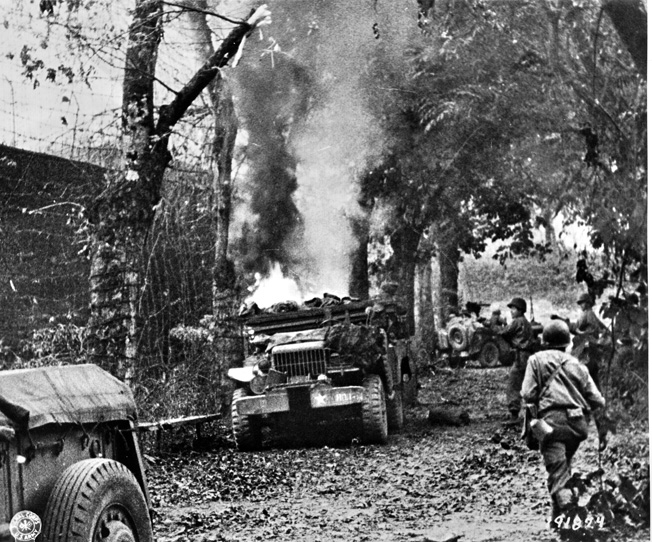
“After returning the two litter bearers, the company had at this time a strength of 4:24. On the American side several soldiers had fallen. We had been unable to take prisoners at this time. When darkness fell, the fighting ceased.
“Afterwards we heard the enemy digging entrenchments. He was probably preparing a defense for the next morning against a German attack from the same direction as earlier. That gave me the idea of surprising him again; so instead of attacking the position he was currently reinforcing, we would attack his newly formed flank. For that I would need good reinforcements.
“First I spoke with a tank commander from an SS-Panzer regiment that had been sent to Sèves to support us. He promised to support my attack with three tanks from his unit the following morning. I also went to the commander of 2nd Battalion/FJR 6, Hauptmann Mager, but he could promise me no support.
“Afterwards I searched out the command post of 3rd Battalion/FJR 6 and spoke with Hauptmann Trebes. He gave me command of a group with the strength of 1:15, which was equipped with two heavy machine guns; this group had been placed under his command as a reserve. Because these men had little experience on the front, I didn’t want to send them into an attack the next morning, but I still could use them.
“Because the Sèves lowlands absolutely had to be blocked according to my plan, and heavy machine guns with a firing speed of 1,300 rounds per minute would be excellent for this task, I sent the group northeast of the Sèves to take up position in a sunken road. From this position, they could see the whole Sèves lowland and had a completely free field of fire.
“Thus it was possible to block any retreating enemies or enemies trying to move behind us. My assignment to the group was to build up and camouflage the machine gun position in the remaining hours of the night. They did not have permission to fire during my morning attack … they were free to fire only on retreating or advancing enemies.”
234 Prisoners
Uhlig added, “On 23 July at 7:30 am, it was absolutely still. Low-lying cloud cover had appeared that prevented enemy ground-attack planes from engaging. Three panzers waited on the street towards St. Germain at the Sèves town exit. The 16th Company stood ready to march from their old position across from the Americans. An Oberjäger assigned a group of six men to every tank. The attack was supposed to start at exactly 8:00 am by firing all weapons from the road running northwest. After that the panzers were supposed to drive forward, with the groups assigned to them following.
“Surprisingly, the tank commanders rejected this plan. For this kind of attack, the complicated terrain left them too open to enemy tank-killing units. I changed the plan and ordered the three groups to attack in front of the Panzers. Shortly before 8:00 the tanks advanced, the men of the 16th Company/FJR 6 jumped out of their positions to the tanks.
“The firefight began and suddenly, almost to the exact minute, the American artillery unleashed a heavy barrage on the area behind us. The fire gradually shifted back to our initial position and came closer and closer to us. We were forced to attack, so to speak. During the pandemonium, our opponents disappeared into their foxholes. Because of this we could storm forward and so escape the artillery fire. Unfortunately the panzer on the left stopped early in the operation because of mechanical failure; the panzer on the right had become immobilized under a collapsing roof in a farm in Closet. Nevertheless, we made progress.
“Certainly the enemy had not realized how inferior our numbers were, because the first U.S. soldiers surrendered themselves; others tried to withdraw through the Sèves lowlands. At this moment, the concealed machine guns opened their fire and thus cut off the Americans’ return path. In a sunken road on the southeastern edge of the Sèves lowlands, we drove the opponents together and began to take prisoners.
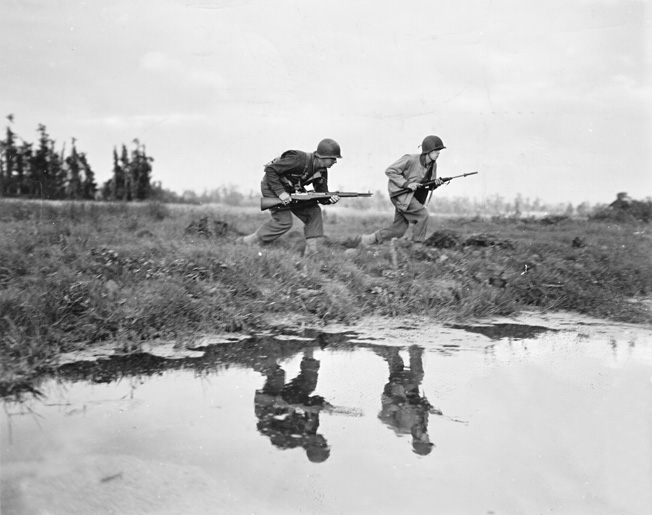
“The captives had to put down their weapons and were marched to the regimental command post in groups of 20-25, with one of my men to lead each group. Once I only had a few men left it became clear to me that we must have taken more than 200 prisoners. Around 11:00 am the battle was successfully concluded. I occupied the recently retaken main line of resistance with the heavy machine-gun group assigned to me and with some men from other units who had been scattered. Afterwards I returned to the regimental command post with the remains of 16th Company/FJR 6. Here I reported my successfully completed assignment to the commander. He commended me.
“In the large hall of the farmhouse, 11 American officers were collected. They were being handed tea when the commander introduced me to them as the leader of the whole offensive operation.
“The last successful battle of a unit of the German 7th Army in Normandy was over. As a result of it, we had brought in not only the two to three prisoners that the commander had requested, but exactly 234. On the morning of 24 July, I learned confidentially from Heinz Gabbey, the Hauptfeldwebel of the regimental staff, that the commander had submitted my name for a Knight’s Cross of the Iron Cross. I received it on 29 October 1944.”
A Three-Hour Ceasefire
Around 2:30 pm, the forward-deployed outposts of FJR 6 reported enemy activities in the Sèves lowlands. The Fallschirmjäger opened fire on three Americans, but realized shortly afterwards that they were dealing with army chaplains who had slipped into the combat zone unarmed and unnoticed. A Protestant pastor, a Catholic priest and a preacher from the Salvation Army were searching for wounded survivors among the corpses strewn throughout the river meadow, which was open to constant fire from both heavy machine guns.
Disregarding the fact that what was occurring was an act of humanity, American fighter-bombers attacked in a low-level flight, covering the field with fire. When the airplanes turned away, some American medics arrived to help the army chaplains and Major von der Heydte ordered that his Fallschirmjäger should help them recover their wounded; he offered the Americans a three-hour ceasefire. In return, the Americans sent over wounded Fallschirmjäger from the 11th Company who had been taken into captivity the day before during the advance of the 358th Infantry Regiment. During the ceasefire both sides recovered their wounded and fallen without danger.
Major von der Heydte issued the following report to the 2nd Fallschirmjäger Division on July 23, 1944 at 11:45 pm:
“The enemy—U.S. 90th Division—attacked the middle and left wing of the regiment yesterday with the whole 358th Infantry Regiment, supported by the 344th Artillery Regiment and probably also the Artillery Corps. The attack was fought back. Oberfeldwebel Uhlig led the operation to repair this breach. With a combat team of only 30 men and support of one Panzer, they predominantly destroyed an American battalion (1st of the 358th). 234 unwounded prisoners were taken, including the battalion commander and 11 officers. According to the captured papers available to the regiment, the 358th Regiment, that had stood ready south of Gonfreville before the attack, was supposed to break through the German main line of resistance east of Sèves and then swing east and take the area around St. Germain.”
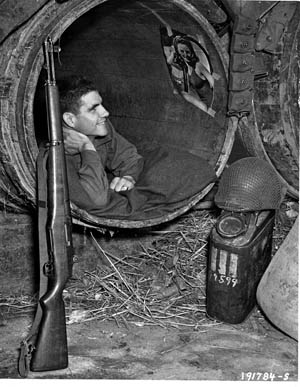
On July 25, FJR 6 observed from its positions as 2,000 Allied planes blanket-bombed the area towards St. Lô. FJR 14, the Panzer-Lehr Division, and some other neighboring units felt the effects of this attack. At this time, the enemy formed up west of St. Lô with strong tank forces. They were able to break through and destroy the German defensive positions and, with a quick advance, take St. Lô.
FJR 6 received the order to relocate to St.-Sauveur-Lendelin and build up a defensive line there along the railway line Combernon–Belval–Ouville, because an attack by the 3rd US Armored Division had broken through in the Périers–St. Lô sector and was now approaching the Périers–Coutances road. The 2nd SS-Panzer Division “Das Reich” offered 10 tanks for this operation. The goal was to make it possible for the German forces escaping from the north to withdraw.
Despite heavy attacks by American armored units, FJR 6 managed to hold the position on the railway at the north edge of St.-Sauveur-Lendelin and to build up a point of main effort on the Périers–Coutances road. The already weakened regiment suffered fresh losses––150 men.
“This Breakthrough is Decisive, the War in France is Lost”
On the next day, the commander of the 2nd SS-Panzer Division sought out the command post of FJR 6 and oriented Major von der Heydte to the situation east of his own positions, where his units had been surrounded again by Americans and where he faced the threat of being completely encircled. He wanted to try to withdraw his beleaguered division with the Fallschirmjäger covering his retreat, and then they would follow. He closed his report to Major von der Heydte with the words, “I am an old tank man. This breakthrough is decisive, the war in France is lost.”
Major von der Heydte could not meet the SS officer’s wish right away. This was due to the fact that the reinforced 16th Company/FJR 6 was in the area of Sèves at the time, in order to feign continuing occupation of this region by German troops. In addition, the danger of fighter-bomber attacks was still great for a daytime march. Major von der Heydte drove ahead, however, to investigate the new positions near Coutances.
In the gray dawn, FJR 6 began reconnaissance patrols because they were unsure of the enemy’s status and positions and needed further information. As expected, the results were sobering. Admittedly, the Americans were moving from Périers slowly, but American tanks from St. Lô had advanced to the south and threatened to attack along the road toward Coutances. FJR 6 had barely swung to the east to face the Americans when the regiment received enemy contact and engaged in a skirmish. During this clash, the 11th Company was surrounded by American troops and completely destroyed.
Major von der Heydte gave the order for the 16th Company under Oberfeldwebel Uhlig to hold the Sèves position one more day, and then to regroup with the regiment in Coutances. Because of their inferior numbers, the 16th Company could not resist the broad breakthrough by the 90th U.S. Infantry Division and swerved in a delaying action towards Périers.
The Fallschirmjäger succeeded in drawing off some of the 90th Division and slowing down their general advance. For a total of three days, Oberfeldwebel Uhlig and his troop waged a small war against the Americans and tied up enemy forces in this manner, forces that otherwise would have been deployed to go after the relocating main German units. Finally, near St. Michel, south of Périers, the ring around the rest of the 16th Company became ever tighter until escape from this encirclement was impossible. The 16th Company pressed the enemy hard for days. On July 30, Oberfeldwebel Uhlig and the rest of his men were taken prisoner.
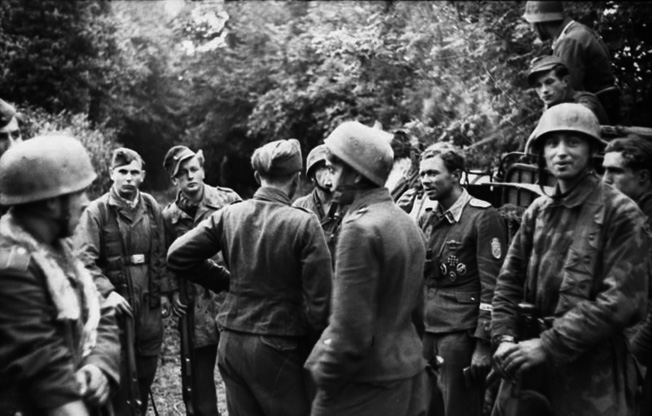
In the encircled area around St. Lô, serious disagreements arose between the Waffen-SS and the Fallschirmjäger. While the SS reported that a battalion commander of FJR 6 had suffered a nervous breakdown in combat, and that the Fallschirmjäger were no longer holding their positions, Major von der Heydte’s men countered, with irony, that the Waffen-SS would hold their positions until the last Fallschirmjäger. Morale sank further when the commander of the 2nd SS-Panzer Division [Obersturmbannführer Christian Tychsen] died of wounds and his second-in-command [Oberführer Otto Baum] took over.
Under the protection of darkness, FJR 6 broke away from the enemy and moved several kilometers, according to orders. (Under such strong pressure from his opponents, von der Heydte barely noticed his promotion to Oberstleutnant [lieutenant colonel].) On the following day the regiment received the order to break through to Percy via St.-Martin-de-Centilly with the rest of the 2nd SS-Panzer Division, but it was not until dawn the next day that the German forces were able to depart. The Fallschirmjäger initially rode on the panzers during the operation. At first, fog supported their operation and offered cover against air attacks, but by 8:00 am the fog had dispersed and fierce fighter-bomber attacks began.
Near La Corbière the leading tank came under enemy attack and the Fallschirmjäger had to dismount and regroup in trenches to the right and left of the road. They also determined that 3rd Battalion/FJR 6, which had been in the back of the column, had gone missing along with its accompanying tanks. The SS had probably become lost.
Because the SS commander on location refused to follow von der Heydte’s advice, von der Heydte decided to seize the initiative. A recon troop reported that the enemy ahead was too strong. At the same time, a part of the column believed to be missing had returned and reported that a path over St.-Denys-le-Gast was free from enemy troops.
Part of 2nd Battalion/FJR 6 managed to disengage from the enemy quickly and mount the tanks, while the rest of the battalion under the direction of Oberstleutnant von der Heydte tried to fight its way through on foot.
The Fallschirmjäger who had found the way out near St.-Denys-le-Gast were able to use the gap in the Allied cordon to get through without enemy contact. However, the Fallschirmjäger mounted on the fleeing SS vehicles came under a large-scale air attack south of St. Denys and suffered bitter losses. Hauptmann Trebes, commander of the 3rd Battalion, was amongst the fallen; during the air attack he sought cover under a tank that was then targeted by the American fighter-bombers.
The survivors still managed to meet up with their comrades who were traveling on foot; having traveled via St. Denys in a march of 60 kilometers, they met up at La Mancelliere, southwest of Percy. Here they discovered that some of the 2nd Battalion under Hauptmann Mager were still missing, but contact was reestablished one day later. Von der Heydte recalled later how the defensive position near Percy was only a cordon of single outposts, without any strength to resist a major assault.
Hermann Wübbold’s Brush With Death
Because American tanks were on the Hambye–Villedieu road, and because FJR 6 had no tank-destroying weapons left, von der Heydte decided to march more than 50 kilometers to avoid Villedieu towards St.-Martin-de-Bouillant. The 353rd Grenadier Division could be found there, and the Oberstleutnant would put his troops under their command. When American tanks moved into St.-Martin-de-Bouillant that afternoon, FJR 6 was divided into two battlegroups, one group that had roughly the strength of a company. The other group headed through to Alençon, according to orders.
Many of the men of FJR 6 have powerful memories of this chaotic period. Hermann Wübbold, at the time an Obergefreiter in the WuG Troop, reports:
“On the evening of 25 July, our boss, von der Heydte, called Wern to him. Waffenoberinspektor [Chief Weapons Inspector Heinrich Wern, leader of the WuG Troop.] He also called me to him, stating that four ears hear better than two. He explained that the enemy would march forward without any more resistance and that our troops could no longer offer effective counter-fire due to our heavy losses. He gave the order for us to move during the night toward Villedieu via Gavray. On 27 July, we were supposed to blow up the large ammunition storage dump left behind at our deserted position in St.-Michel-la-Pierée, near St.-Sauveur-Lendelin. During the morning, we—Waffenoberinspektor Wern, Oberfeldwebel Günter Friebe and I—set out toward Coutances. We made it there despite the air attacks. We rode farther on the National Highway towards St. Lô. Meanwhile, it had grown cloudy so the fighter planes could no longer attack.
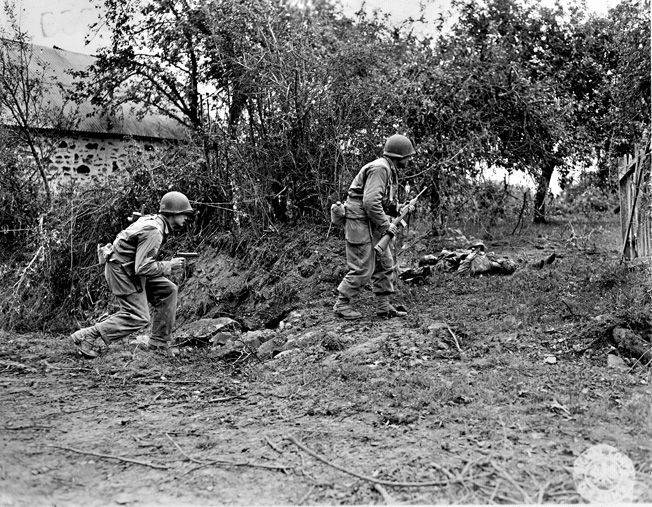
“Günter Friebe was from Großgiesmannsdorf in Upper Silesia. Three weeks before this fateful trip he had said to me: ‘Listen to me, and pay attention to what I have to say. I’m not going to come back from this war. I will fall here. My wife Maria recently gave me a daughter. Her name is Katharina. I just got this message the day before yesterday. You have to promise me that you will inform her about my fate.’”
“In the weeks that followed he repeated this plea to me over and over; the last time he did so, on the evening of 26 July, one day before his death, he said it so urgently. Until this day I’ve been unable to forget that. Before the last trip, Wern said to me: ‘Sit in the back. I’ll drive, otherwise you’ll fall asleep.’ I hadn’t slept for two days and nights. Without thinking much about it I put on my steel helmet, for the first time. Günter Friebe sat in front of me in the passenger seat. I bent forward and tried to sleep. After seven kilometers we left the street and headed north. Suddenly I looked ahead and cried out ‘Turn around! There are Sherman tanks and American soldiers ahead!’
“Wern turned the car around and headed to the right. In the curve, a shell struck directly above Günter Friebe. The car ran towards the right into a roadside ditch next to an apartment building. After a short period of unconsciousness, I came to, and was quickly aware of my situation. Friebe was no longer there. On the seat in front of me there was only unrecognizable flesh and blood to be seen. Wern had lost his right arm and been hit heavily by shell splinters. My hands, face, and legs were bleeding. The wounds were not serious; I at least was able to leave the car and crawl into a pipe under the street.
It was around 2:00 pm when claustrophobia forced me to leave the pipe, cross to the other side of the street, and run into a sunken road. After going around 50 meters, I spotted a Sherman tank about 30 meters off, headed straight for me. Through the bushes, I hadn’t been able to see it early enough. GIs marched behind it. On the right side there was an entrance to a field; I fled there and let myself collapse. After a while I crawled towards a rampart that was overgrown with shrubbery. I was still wearing my steel helmet. It looked very similar to the American ones; the American soldiers probably thought that I was one of them. At the forward edge of the frontline, the Americans weren’t taking any German prisoners. They exterminated them instead. If they had recognized me, my life would have ended right there.
“The worst part of it was the thirst. I finally fell asleep from exhaustion and when I woke up it was almost dark. First I took off my steel helmet and noticed that shrapnel had pierced it. The splinter was still sticking in the inner padding. Led by nothing more than a feeling, I headed toward my comrades. To do so I had to cross the American lines. I met up with the last rearguard of our troops along some railroad tracks. I was allowed to ride on a Kübelwagen for part of the way.
“When day began to break, American fighter-bombers unceasingly directed heavy attacks at the fleeing masses of soldiers and vehicles in the sunken roads. They did not spare the many medical vehicles carrying wounded soldiers. Even a single soldier was enough to warrant the fighter-bombers’ target. Around 6:00 am, I reached my comrades from the WuG Troop. They had spent the night celebrating and drinking. When they saw me, they instantly sobered up. From the last discussions with the commander, I knew that the Americans would expand their encirclement. My urgent advice was to relocate to the south as quickly as possible; they followed my advice and so we were spared being taken prisoner by just a few hours.”
Albert Sturm Walks Into an Ambush
At 2:00 am on July 29, the regiment received the order to attach themselves to the SS-Panzer regiment and head along the route Ouville–La Penetière–Maupertuis–Percy. Albert Sturm remembers the move:
“At some point the Americans had broken through the front on a broad scale and we were—we heard with surprise—to be loaded onto trucks and transported to this open gap in the front. When we arrived there, the 1st Platoon of the 7th Company, at the time 10 men strong, received the order to push forward into open territory and seek out contact with the enemy. The other platoons received similar orders and the rest sequestered themselves around various street intersections.
“Our recon troop set out. Everyone who has been on the front knows the feeling of pushing forward into the unknown when you aren’t exactly sure where the enemy is located. We set up security in all directions, jumped from hedge to hedge, slipped through sunken roads and occasionally took short cigarette breaks. At least two hours passed and we still hadn’t seen anything of the enemy. An uncanny calm settled around us; because we had been consistently under fire for eight weeks, the silence gave us a bit of the creeps. Nonetheless, our attentiveness waned a bit in the afternoon sun. We became careless and ran into a trap set by the Americans!
“While we were climbing over a hedge, we made the mistake of not sending out a man to scout ahead until the next hedge; instead, we all climbed after each other in a single file. The first few were already over when I saw our three comrades standing with hands lifted and their belts unstrapped. American soldiers had surrounded them in a half-circle and were pointing their fire-ready weapons at them. I threw myself back behind the hedge; my comrades sprinted off right away. We dashed to a hedge that ran parallel and went into position. I reported to them what I had seen, and we made plans to get the three out. But how?
“After a brief deliberation we circled around the hedged area and hoped to intercept the American troops. But we didn’t have any luck. The Americans had slipped off; perhaps they believed that we were getting reinforcements. We searched as long as we could. Then we received the order that we were to go back to our meeting point at the street intersection; we arrived around 5:00 pm. A whole army camp had been deployed; for the first time in a while I saw German tanks again, and not just Panzer IVs, but many, many tanks. As I had heard, these were the combat elements of the 2nd SS-Panzer Division ‘Das Reich.’ The rest of our regiment was gathered, plus men from Organization Todt (OT; a Nazi engineering and works organization) and many who had been scattered from all types of combat divisions.
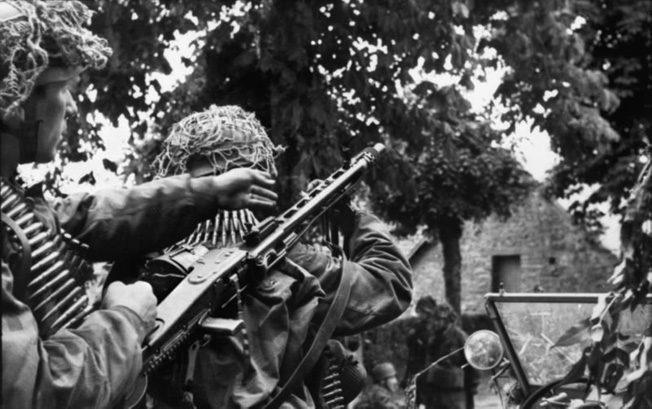
“Surprised by the large collection of men, we asked our way through to the 7th Company; our platoon leader reported to the company commander, Feldwebel Otto Netzel, who was happy that our reappearance increased the size of the company to about 30 men again. At that time that was quite an accomplishment to have a company with the strength of a platoon.
“We were informed about the situation. The Americans were trying to close us in. The only question was if we would be able, with the other troops that had joined us, to break through a gap in the encirclement or if we would have to fight our way out. Now and again I saw our commander drive by in a Kübelwagen alongside some high-ranking official from the SS.
“I was pleased that two comrades whom I had known since basic training, Klaus Klapprat and Günther Koch, had found each other. They had their canteens full of cider; we all partook heartily and then lay down to sleep against a hedge. Our rest did not last long because the 7th Company received the order to mount the tanks. We learned the following: the tanks would drive as the advanced guard, while FJR 6, the SS, and the other foot troops would follow along both sides of the road in single file. Dispatch riders as well as the commanders of the various units would maintain communications between the Panzers and the infantry.
“It was already dark when the tanks drove off. About ten Panzers drove close together along the road; they could not deviate from the road because to the right and left there were hedgerows. The 7th Company sat on the first three tanks, Klaus and I on the third, the command tank. Klaus, Günther, and I had always tried to stay close together, but on this evening, Günther sat on the first tank.
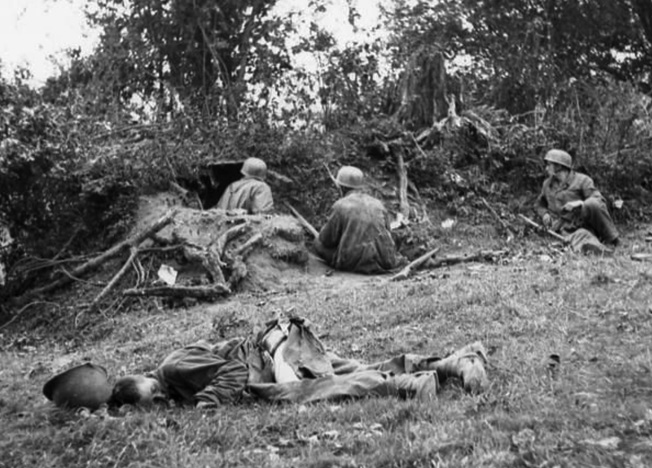
“It is a strange feeling to ride through the night on a jolting metal monster. Now and again a dispatch rider would come up to our command tank and give the commander a report, whereupon we would slow down or ride faster. The distance between the marching troop and us could not be too great because if we really were to break through, then the troop would need our tank support. The whole night passed like this.”
“Boys, It Looks Like We’ve Made It”
Near La Penetière in the morning, strong American forces attacked the battlegroup, and an intense battle ensued in which the Fallschirmjäger maintained the upper hand but were separated from most of the SS-Panzer units and continued the march west alone. Albert Sturm continues:
“Around 3:30 am, the tank commander said to us, after having received a report, ‘Boys, it looks like we’ve made it, we’ve just come out of the encircled area!’ Many of us had been dozing and we were jolted awake by this news. We were thrilled just once to have escaped. Ten minutes later we drove by a lonely farmhouse; the maids who had just got up to milk the cows waved happily at us, and day began to break. The morning fog lay over the fields; the low mooing of the cows being milked reached us. The street curved away ahead of us. As soon as the first panzer disappeared around the curve and the second one followed it, the peaceful daybreak was over.
“The American antitank weapon gave a short, dry roar. We saw that the tank standing in the curve had been hit and that the force of the explosion had sent the comrades who had been riding on the tank flying away. We jumped down from the tank right away. Klaus and I ran forward to see what had happened to the first tank, the one that Günther had been sitting on. The comrades on the second panzer were more or less unharmed, except for a few bruises.
“Meanwhile, all hell broke loose; cracking and popping could be heard from every corner and the air was rife with iron. Under cover of a hedge, Klaus and I crawled around the street bend and what we saw when we lifted our heads out of cover was anything but encouraging. The first tank was burning up, and around it lay a few lifeless Fallschirmjäger. We tried to make out if Günther was among them, but we couldn’t recognize him and so we hoped that he had got away. Klaus and I lay exactly between the opposing positions and the antitank artillery; armour-piercing rifle grenades and curtains of fire from machine guns on both sides swept over us. It was time to pull back, and under cover of the hedge we managed to do this fairly easily.
“When we reported to our tank, our commander, Oberstleutnant von der Heydte, was also there giving orders from his Kübelwagen. We, the 7th Company, were supposed to take over the flank to the left of the road. Springing from hedge to hedge, we were to find the enemy line and remain in front of it until our combat forces closed up the lines.
“So we left our tank and snuck along the side of the hedge. The farther we moved from the road, the cleaner the air became. Then we received the order to turn back in and the 7th Company was again darting forward from hedge to hedge. We communicated without many words; two comrades always moved forward over each hedge, running across to the next one, peering over it, leveling their weapons, and then giving us a sign. When we saw that to our left and right the same maneuver had been carried out, we darted forward and occupied the next hedge. After we had six such maneuvers behind us, we came under intense infantry fire.
“We lay behind our concealing hedge and awaited further orders. Now our other comrades arrived who had been on the move on foot all night, and filled out our line. Meanwhile, it was starting to get light and the Americans began to shoot at us with mortars. We looked up to the heavens—it was still a bit too hazy, but it wouldn’t be long before it was light enough for the fighter-bombers, our worst enemies, to appear in the skies. Around 6:30 am we received the order to set out. Klaus and I exchanged meaningful looks. Until then we had still hoped that Günther would somehow turn up again. We had spoken to every available comrade about it, but he was not to be found. From that morning, Günther Koch was counted as missing in action.
“We still had half an hour until we had to leave; so we lit cigarettes, drank the rest of the cider from our canteens, strapped our equipment together, and stuck hand grenades into our belts where we could easily grab them. So we sat around waiting for the zero hour. Klaus didn’t have long to wait, because a mortar landed directly next to him. It must have hit him hard; he jumped up, screaming like an animal and ran towards the back. I ran right after him, but before I could reach him, two medics grabbed him and laid him on a stretcher. When I breathlessly reached the stretcher, Klaus was already unconscious.
“The medics told me that he had received multiple splinters in the chest, and they marched off toward the first aid station with Klaus on the litter. By the time I reached my position again, I was pretty drained. It’s not a nice feeling to lose two good comrades within two hours and then have to start an attack. A machine-gunner, who was lying to the left of me, called out: ‘Don’t get worried, Albert, we’ll do it!’ His expression under his combat helmet was reckless as he looked over at me.
“And then it was time. We jumped up and stormed the enemy. From the street we heard the humming of tank motors; everything was exploding on all sides. We roared and rushed forward. The Americans didn’t engage in close combat, instead they just retreated while firing madly. To the left of me the machine-gunner dashed forward, shooting from the hip with his MG42, chasing after the Americans with spurts of fire.
“In this way we moved through one hedge after another, and then abruptly the attack lost momentum. The machine-gunner next to me suffered a mental breakdown in the middle of his all-out attack. His assistant grabbed the machine gun and jumped into cover. We all threw ourselves to the ground and also searched for cover. In front of us stood—presented as though for an exercise—a Sherman tank, firing with all its guns. With our small arms we could do nothing against it; we were nailed to the spot by the tank.
“Crawling or running we got to safety behind a hedge and called for a tank-killer unit. The boys still schlepped their Ofenrohr [‘stove pipe,’ the nickname for the Panzerschreck anti-tank weapon] around with them, but they unfortunately had no ammunition left for it. At any rate, we were still able to take out a few of the Shermans with our panzerfausts, but in the long run, that didn’t help us. There was no way through.

“We stayed down under cover and learned that the whole attempt to break through had failed. On the street, our tanks had ground to a halt and were fighting for mere survival. Meanwhile, the fighter-bombers joined in the attack, so that there really was no more chance of accomplishing anything. Then the order came to disengage from the enemy. The 7th Company was supposed to cover the withdrawal. Ha, what 7th Company? How many of us were left?
“But an order is an order. A few of us tried to hold off the enemy for our retreating comrades. We had been given the good advice to hold east of Coutances after we had ourselves pulled back. There was a chance that there would be a hole there through which we could get out. We were lucky that the Americans made no serious attempts to go after us.
“On the street, however, the fight raged with increasing intensity; the Americans wanted to break through with their tanks, but a Panther held out bravely. Even though there were constant attacks, eventually the street became calm. Now there was an uncanny stillness. We received a signal from the 7th Company. We made our way across the field through the bushes. After a short time we came across the farm that had stood there so peacefully in the gray of morning. Now it was shot up and burned out. We hurried on because all of a sudden American soldiers were swarming all over the place. Although there were only a few of us, we split up completely—it was every man for himself.
“Today I could no longer tell you where I crept around and how long it was until I had a solid street under my feet again. It was easier to march on the roads than to fight my way through the exposed open land that felt like a death trap. After I marched along for a while, completely alone, I heard the sounds of tanks behind me. I jumped over the nearest hedge into the ditch on the side of the road and looked apprehensively towards the direction where I heard the rattling of chains. How happy I was to see the national identification cross on the iron monster!
Immediately, I came out from my cover, stood at the edge of the street and waved towards the panzer coming quickly towards me. The turret hatch opened, the tank throttled back its speed and a commander dressed in black gave me a sign to jump up. I set off at a trot and jumped up onto the vehicle from behind, whereupon the panzer set off at full speed again. The commander did not ask me that much; he just let me know that I had to take care of myself. In response to my question where we were headed, he said dryly, ‘We’ll find a gap, and we’ll break through.’ Then he secured the hatch tightly and a hellish ride began.
“The panzer had additional armor around the turret made out of metal plating, and behind it I made myself as comfortable as I could and watched the skies. At high speed the tank made quite a lot of noise, but I still could hear significant sounds of combat up ahead. At first I wanted to jump down from this monster, but somehow I had the feeling that everything would be all right with the tank under me and the steel plating around me.
“Then we were right in the thick of it, driving towards a mid-sized village with quite a large church. The Americans were sending fire across the main street with their artillery. It was hilly terrain and I watched the American infantry storming down the hill. None of this bothered my tank; it thundered through the small city and shoved aside everything that stood in its way.
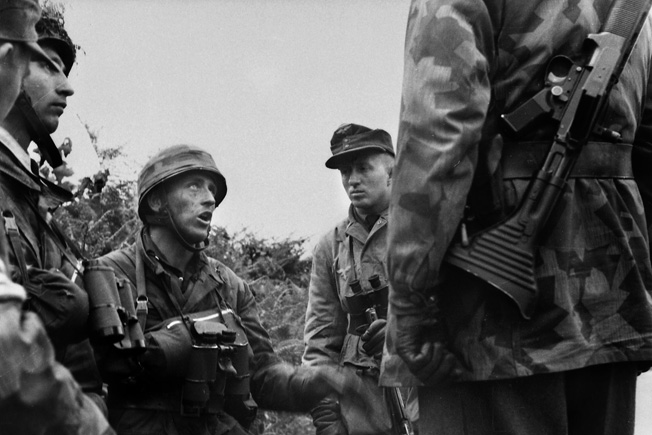
“German mounted units came rushing out of the surrounding farm buildings, carriage drivers beating wildly at the carthorses. Loaded trucks were trying with all their power to break through; infantrymen of all types were running around, with American shells falling between them everywhere. If I were to ask myself today how long the chaos lasted, I would no longer be able to say, but at some point we had moved through it. I stayed on the tank until we arrived at a rear position late in the afternoon. The panzer was sent to the front again, and I said my goodbyes to my tank comrades who had brought us through so well.”
The regiment proceeded to St.-Denys-le-Gast via Roncey, and learned there that American tank units were moving on every major road; the tanks had to be avoided. The Fallschirmjäger literally fought their way through the rural terrain, often using gaps in the American marching columns to cross roads unnoticed. Sometimes the Fallschirmjäger were creeping through ditches alongside roads on which American tanks were rolling directly next to them. They were able to cross the River Seine at two points, using damaged bridges.
Eugen Griesser’s Run-In With Military Police
Eugen Griesser [the author’s grandfather and a member of FJR 6] said, “Every battalion assigned a few platoons to secure the flanks and a rearguard for the retreat out of the encircled area. The commander had ordered that the assembly area for soldiers with minor wounds near Alençon also be used as a gathering point for soldiers who had lost contact with the regiment. There he also wanted to leave information about the location of the regimental command post, so that everyone would be able to find his company again.
“Events played out as they had to. Our platoon ran aground in a sunken road against a company of American Sherman tanks with accompanying infantry in half-tracks. We managed to take out the first two tanks with limpet mines and explosives before the column could respond, and before the half-tracks had enough time to fan out and discharge their infantry. (The sunken roads and narrow streets in Normandy were not well suited for these kinds of moves.) The Americans had to maneuver quite a lot to get their destroyed tanks out of the way. One of us, unfortunately I can no longer remember who, threw a hand grenade into the foremost half-track and we took advantage of the confusion to work our way into the bushes and split up. Because there were at least two companies of American tank engineers on the street, a firefight in this situation would have been pure idiocy. Strangely, the Americans did not pursue us; perhaps they thought our numbers were greater than they were.
“We marched through the night, and the next morning we came upon the baggage train of some army unit. A German military police motorcycle and sidecar stood at the gate of a farmyard; a policeman guarded the motorcycle while two others checked the baggage train. Military policemen liked to act self-important, and these three were particularly harsh. The Feldwebel demanded our papers and our marching orders. ‘What do you mean you’re headed to the assembly area for minor casualties? You all look perfectly healthy!’ ‘Where’s your unit?’ and so on.
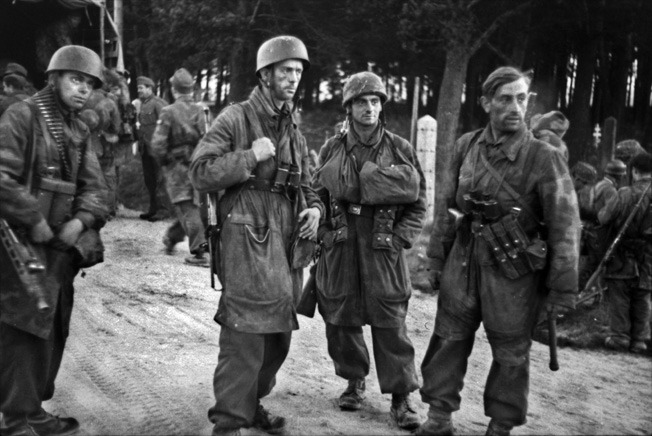
“The policeman refused to understand that we had been separated from our unit and therefore had no written marching orders, although we were already on our way back to our regiment. He began to ramble on about desertion, so a couple of us offered to polish his face for him. Then he wished us a good day and waved us through. During the return trip out of the cordon, our biggest threat was the fighter-bombers, so we were always happy to have foul weather and fog, because only then could we march safe from such aircraft.
“After a few narrow escapes, we decided to avoid regular tactical groups and to march alone, so that we formed small, separate targets. During the next flyover by the fighter-bombers, we waved our hands and even our helmets—the fighter-bombers rushed down on us but waved with their wings because they believed we were Allied soldiers. As long as we moved separately, this tactic worked very well, but as soon as we were marching with other troops, we had to jump into the ditches in the road when the aircraft passed by.
“In Tincebray we ran into the battalion. Hauptmann Mager was happy to have us there again because the Normandy battle had annihilated the regiment and we had been reported missing. He sent us to the commander right away. He greeted us joyfully, but took us down a notch right away because of what had happened with the military police. They had reported our interaction with them to their superior right away and he had informed the whole regiment. It’s strange how well the bureaucracy functioned while all around us whole divisions were being annihilated.”
Court-Martials at the German Officers’ Home
On August 10, FJR 6 received the order to relocate to the 1st Fallschirmjäger Army in Nancy. Due to high losses of men, the regiment was relieved from frontline duty. FJR 6 had been in action since the beginning of the invasion; almost all of its men were sick or wounded at this point. When the order arrived, Oberstleutnant von der Heydte’s command was only 40 men strong; little is known to this day about the fate of the other men. Only eight weeks earlier, the regiment had been 4,600 men. ‘At least I no longer had to worry about securing transportation,’ Oberstleutnant von der Heydte remarked, not without sarcasm.
On August 14, FJR 6 decamped from Tincebray. On the way to Paris, the staff work that had been laid in place earlier paid off. More and more wounded Fallschirmjäger found their way to their regiment because Oberstleutnant von der Heydte actually managed to keep the assembly area in Alençon constantly informed about the location of FJR 6; the men were literally running after their regiment. Von der Heydte incorporated new men into his unit again, as well as members of other units who crossed paths with our regiment. By the time they arrived in Dreux, 1,007 men were reported as ready for service. From Paris, the regiment relocated to Nancy by motor march.
On the way to Nancy, the Fallschirmjäger learned, in an unnamed town, about the joys of rear-area service. Oberstleutnant von der Heydte described the situation as following: “We arrived in a small town and passed by an inn with the sign ‘German Officers’ Home;’ loud, jarring music was coming from the inn. We weren’t really in the mood for loud music; we were just hungry and thirsty. I ordered that we stop in front of the ‘German Officers’ Home’ and went in.
“I found a few drunk officers from the rear area, who were with some not-so-sober French prostitutes. That got on my last nerve. The German officers, who at first didn’t recognize my rank (I always kept my rank insignia in my trousers pocket), wanted to refuse me entrance to their ‘officers’ mess.’ It didn’t do them any good. I called a few of my soldiers into the pub and ordered them to arrest the officers present, to strip them of their shoulder straps and to determine what court-martial would be applied to them. I’ll never forget the dumbstruck faces of these ‘gentlemen’ when they saw my rank, which I had pinned on in the meantime, and when they heard that we were Fallschirmjäger.”
The Reorganization of FJR 6
In Nancy, FJR 6 received the order to relocate to Güstrow, a city in the Mecklenburg-Western Pomerania region of northeastern Germany, where the reorganization of the regiment would take place. For the Fallschirmjäger this meant, above all, that they could have a rest period and could recover for the future battles that would inevitably come.
While the regiment began to settle down in Güstrow, there were still some scattered soldiers in France. A platoon of the 11th Company under the leadership of Oberjäger Heinrich Fugmann, which had been detached to secure the baggage trains, arrived late in Paris.
Fugmann recounts, “With 25 to 30 men, traveling mostly on foot and hitching rides, we arrived near Paris. On a country road we were stopped by a technical officer who was travelling in a Kübelwagen; he asked us how the situation on the front was. He took us to a soldier’s home, where we got something to eat and had the opportunity to bathe after months of being deployed. From a clothing warehouse that was about to be blown up, he got us new uniforms and, most importantly, fresh underwear, because ours was completely dirty and lice-ridden.
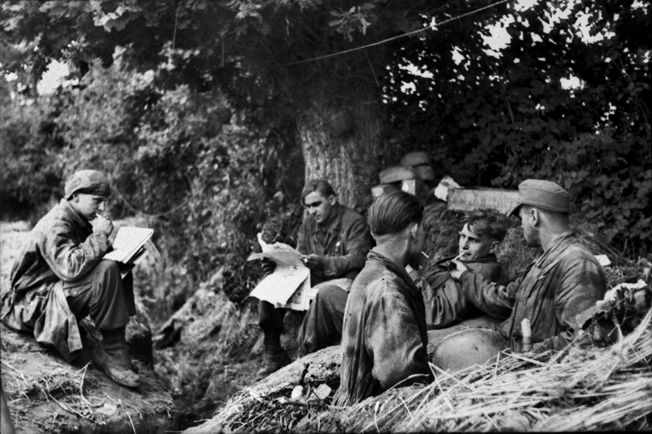
“On the following day we got lucky one more time. A communication unit, which was primarily made up of female personnel, was supposed to be transported to Nancy with omnibuses and we were allowed to ride along. The communications officer who was responsible for the transport explained that he was happy to share the buses with Fallschirmjäger because he had to drive through some areas where partisans were operating. Several times on the trip, we were forced to abandon the buses because of low-level air attacks, and these caused several more losses.
“Some of the women sought cover in the nearby road ditches and canal pipes, and after the attacks they crawled out of hiding shaking and screaming, completely wet and covered in mud from head to toe. It was a hellish trip and we were truly delighted to reach Nancy. From there we traveled with the train to Güstrow, where more fighter-bombers attacked us during the trip. Some comrades reached our destination, but no longer alive.”
The reorganization took place in an air base that was in the process of being built; the “Emil Unit” also undertook the rebuilding of the 1st Battalion there. Most of the buildings had not yet been finished, so the Fallschirmjäger and the new arrivals had to be quartered for the most part in tents. The reorganization was a positive experience for the veterans; with only a few exceptions, all men and NCOs received eight days of leave.
The whole reorganization had more of a cosmetic feel because despite intensive efforts, the Luftwaffe was not able to offer enough replacements for the regiment’s losses suffered in the Normandy campaign. In addition to the young 17-year-old recruits, volunteers for FJR 6 were found from amongst office and ground personnel, and from pilot school.
Franz Hüttich commented on the quality of the new recruits: “To get the required replacements, a lot of Heldenklau [thievery] took place. Young boys were attracted with great promises: short, quick deployment, better provisions, higher pay. Flying personnel, older members of the Luftwaffe, who didn’t have any planes, and who could be spared in the logistics offices and admin offices, came to us. But we all knew that it wouldn’t amount to anything.”
As Oberstleutnant von der Heydte later described the situation: “The unit hadn’t meshed yet. The young replacements constituted 75 percent of the regiment and they were barely trained or not at all. (Hundreds of members of the regiment had never held a weapon in their hands until they fired the first shot of their life in their first battle!) The officer corps for the most part was not in a position where they could fill the positions needed for officers.
“Nevertheless, the young volunteers fitted in quite quickly, taking the old hands as their role models. At first there were some problems with the new officers because most of them were former pilots and had difficulties adjusting to their new roles. The switch from being a hero in the skies to a Fallschirmjäger officer was so difficult for some that Oberstleutnant von der Heydte had to operate according to the following principle: whoever couldn’t obey was kicked out. Also, the promotions in the former core group were not enough to meet the needs for officers and NCOs, and many of the new recruits, despite their rank, did not have the necessary combat experience to lead groups and platoons in battle.”
Von der Heydte was supposed to build up a powerful unit in only six weeks, an objective that, in view of the facts, was set to fail from the beginning. Nonetheless, the trainers set to their task with enthusiasm, using tried and trusted methods. Providing the men with uniforms also proved difficult; for the most part they were unable to furnish them with gear especially designed for Fallschirmjäger and instead had to use regular army kit.
Albert Sturm noted that “Many of the boys were 17 years old, not even really grown up. Therefore they had received an extra ration of milk during jump school. The doctors also ordered that they receive additional milk in order to make them stronger while they were with us. No one had any idea, however, how we were supposed to keep that up during deployment.”
Based on the experiences of the Normandy campaign, von der Heydte restructured the regiment. Along with the planned three battalions, he put together an additional fourth battalion. For this battalion he took personnel from the first three battalions, and also brought in additional heavy artillery; thus the regiment’s ability to fight off tanks was notably strengthened. Hauptmann von Dobbeler took over command of the 4th Battalion. The newly reformed 1st Battalion was led by Hauptmann Peiser, the reliable Hauptmann Mager retained command of the 2nd Battalion, and Oberleutnant Ulmer took over the 3rd Battalion.
Because the time for training was short, formalities like drills were dropped. The program consisted of combat exercises day and night. If anyone complained about the harsh pace, the old hands just told him, “Sweat saves blood!” Von der Heydte spent a lot of time with the training units and for the most part carried out the tactical training of the officers himself. Some in the ranks of experienced personnel were put through sniper training during this time—until then FJR 6 had not had its own sniper troops.
EPILOGUE: In early August 1944, FJR 6 was partly reconstituted with new troops and transported to Güstrow for further reorganization. Hardly had the unit settled in than it received new orders to head immediately to Holland in order to bolster German defenses against the British. After engaging the British around Gheel, FJR 6 found itself caught in the middle of Operation Market-Garden—the attempt by the Allies to outflank the Germans with a massive airborne/glider drop followed by ground attacks.
In late October, after weeks of hard fighting in which FJR 6, despite its reduced numbers, proved to be the equal of the British, Canadian, and Polish forces sent against it, von der Heydte was awarded the Knight’s Cross of the Iron Cross and assigned to command the Parachute Army Weapons School. His regiment received the Nahkampfspange (Close-Combat Clasp) in silver for its outstanding service in Normandy and in subsequent actions. FJR 6 was the only German parachute unit in its entirety to receive such recognition.
In November, FJR 6 was redeployed to the Eifel-Ardennes Region on the German-Belgian border, where it soon learned it would be part of the coming Wacht-am-Rhein mission—what has become known as the Battle of the Bulge. Von der Heydte was given the mission of leading a Fallschirmjäger battlegroup, part of which was made up of his old FJR 6. It was planned that the battlegroup would be dropped by air on December 16/17 into Belgium (Operation Stösser); it would be the final German parachute operation of the war.
The battlegroup’s mission came to an end when rations failed to be air-dropped to it. Surrounded and half-starving, the Germans engaged in numerous firefights with the Americans as they fought their way back to Germany. Wounded and exhausted, von der Heydte was forced to surrender to American troops. FJR 6 continued fighting on German soil for the next several weeks at Schmidt near Aachen, but resistance was hopeless. In the middle of April the remnants of the proud FJR 6 laid down their arms and went into captivity, beaten but unbowed.
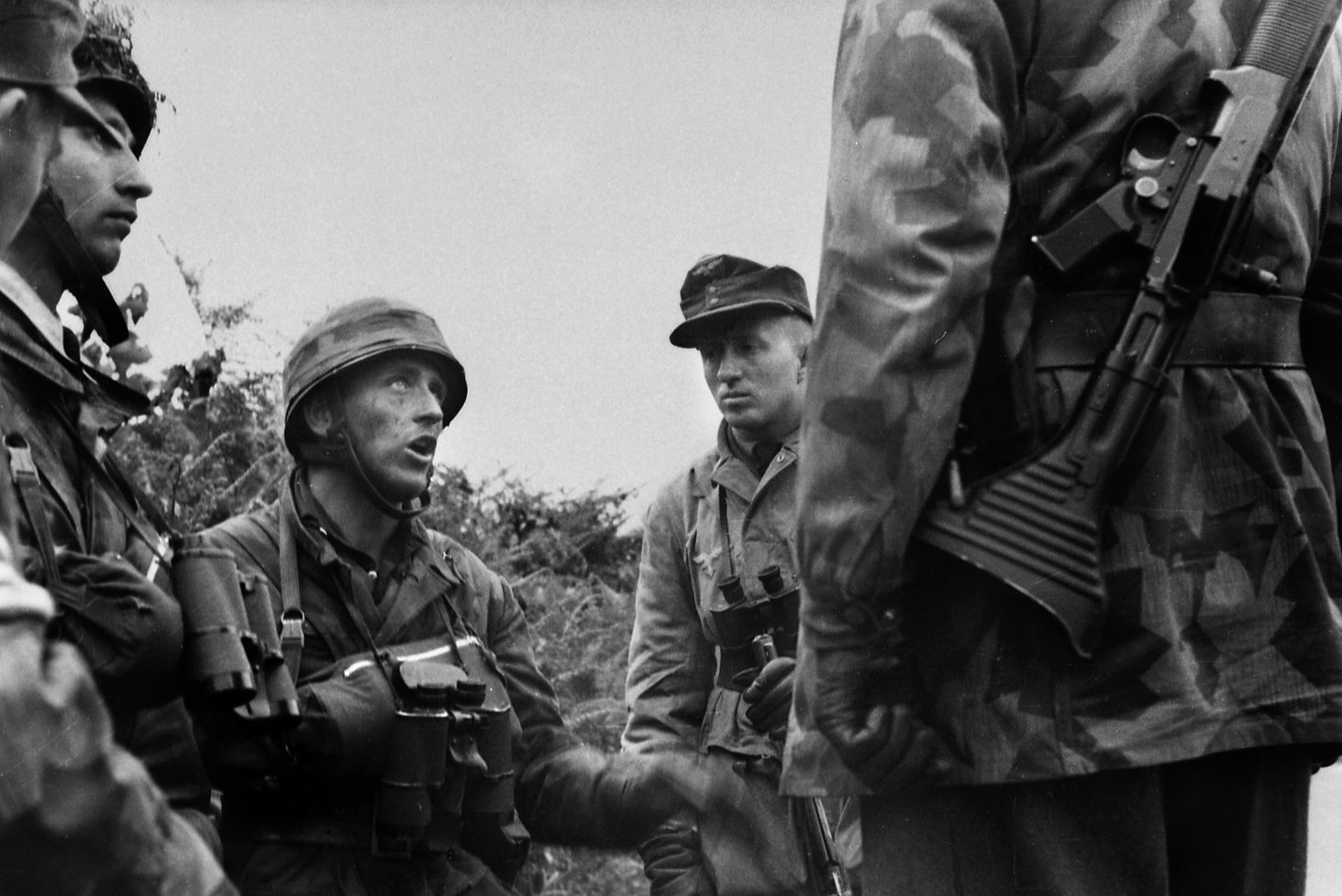
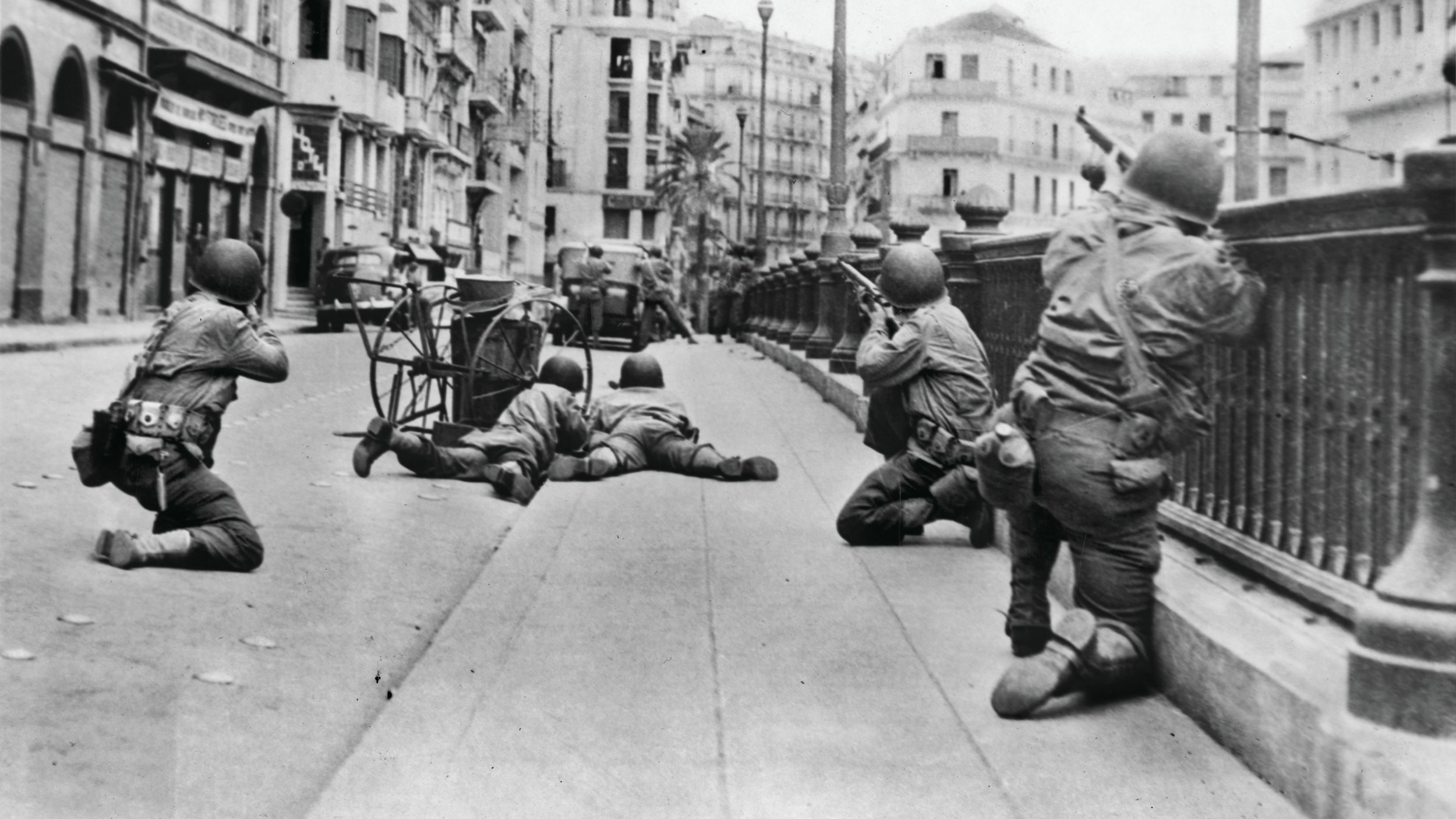

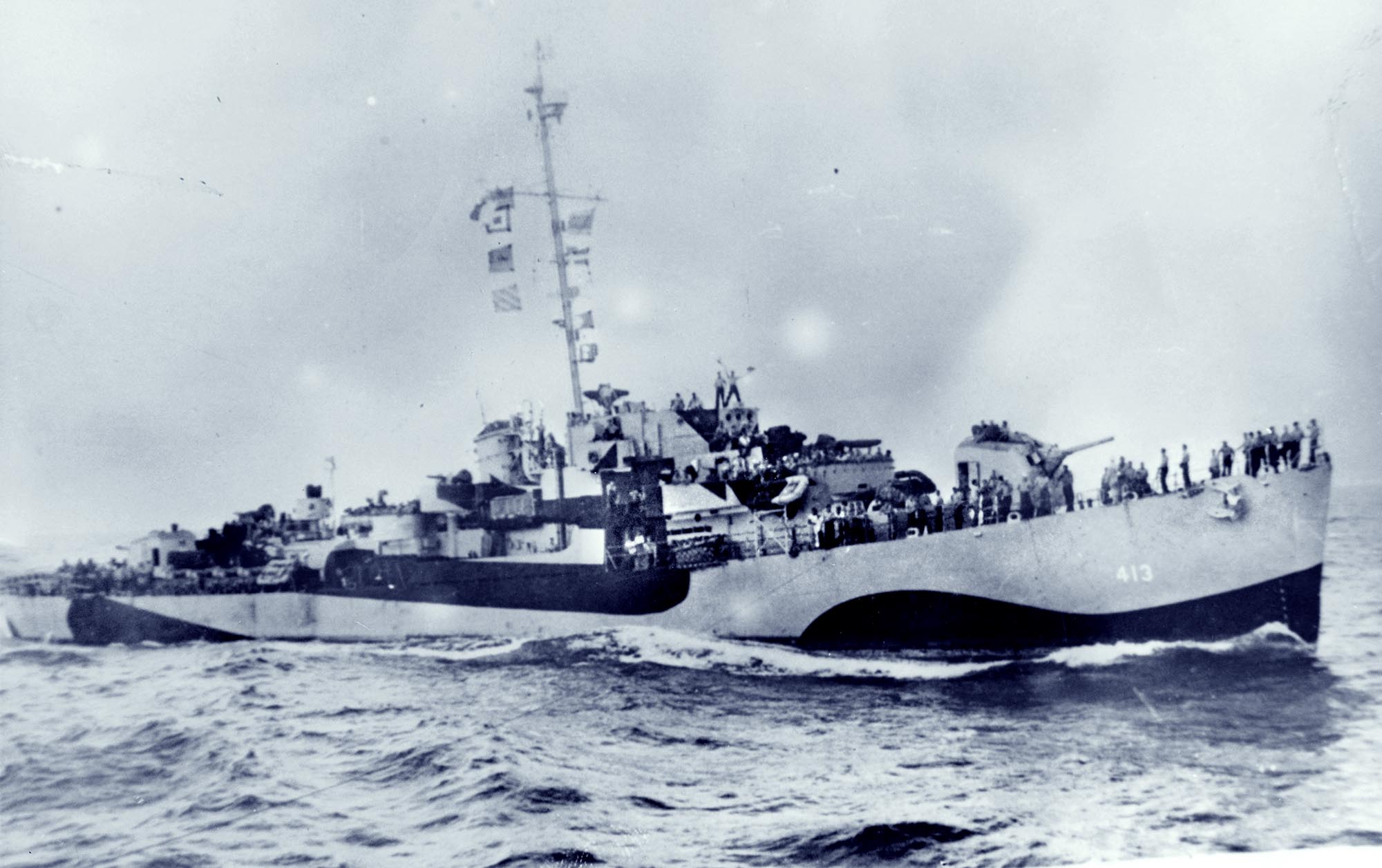
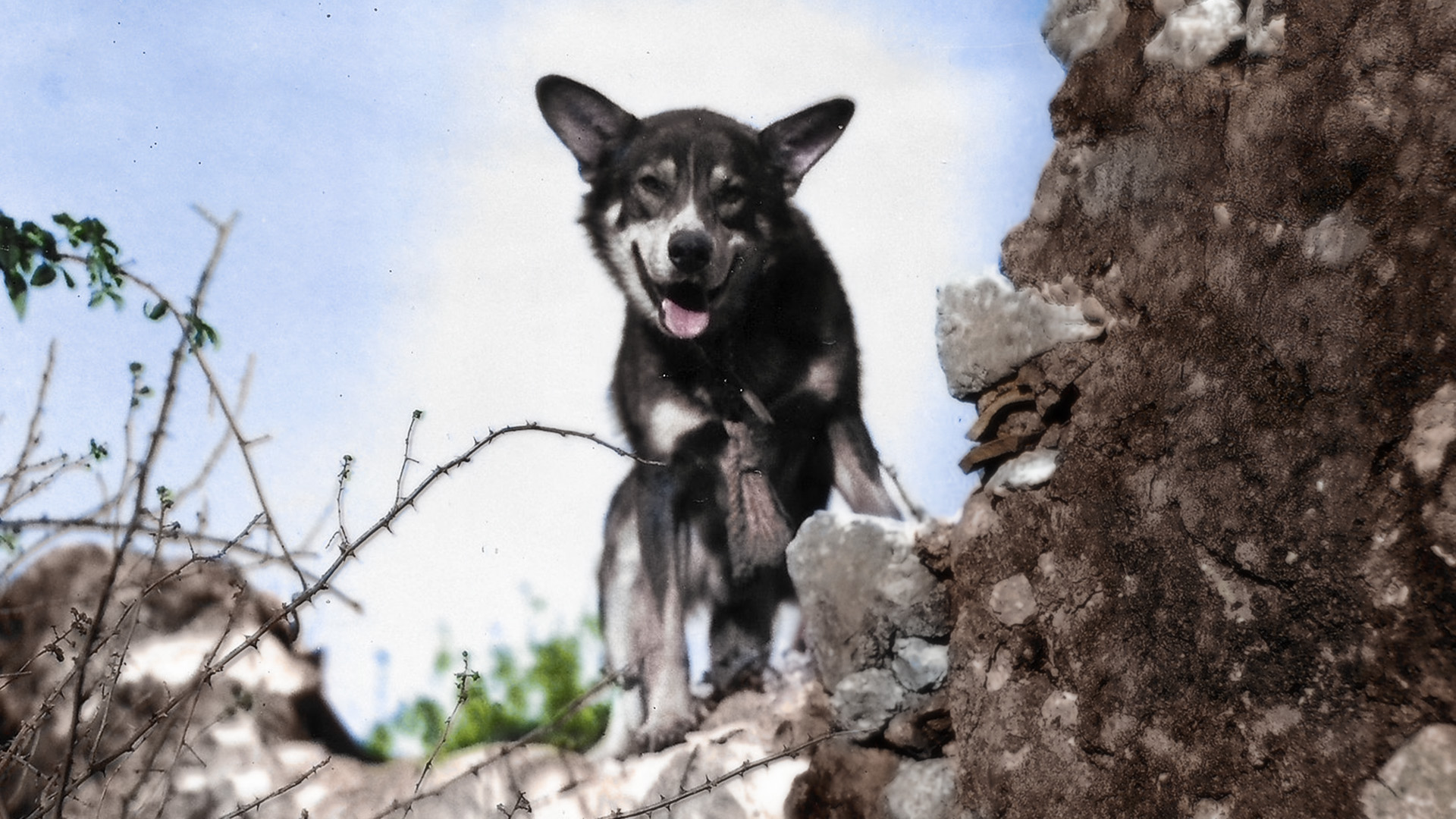
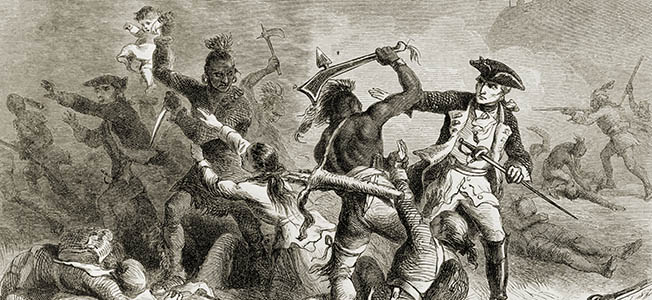
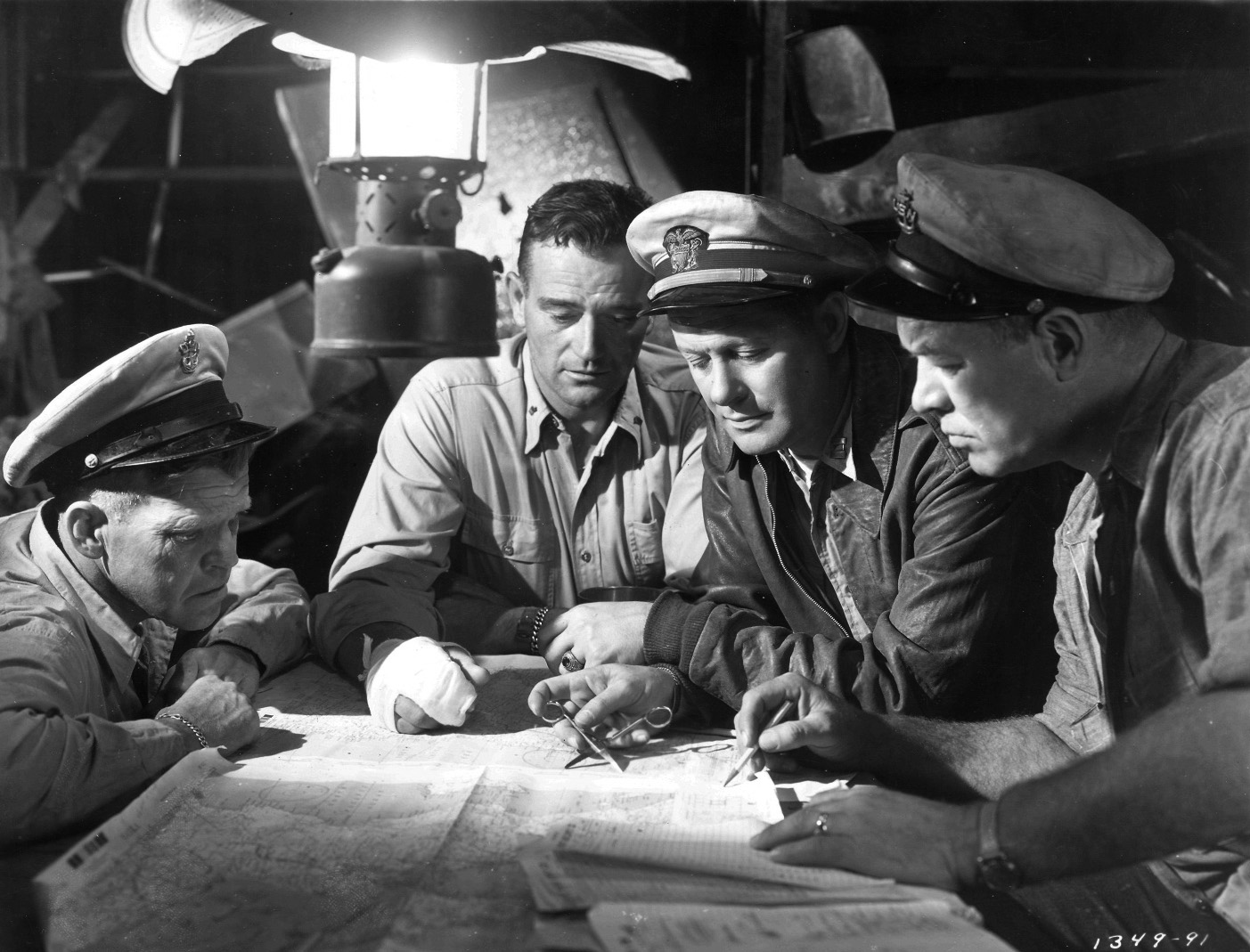
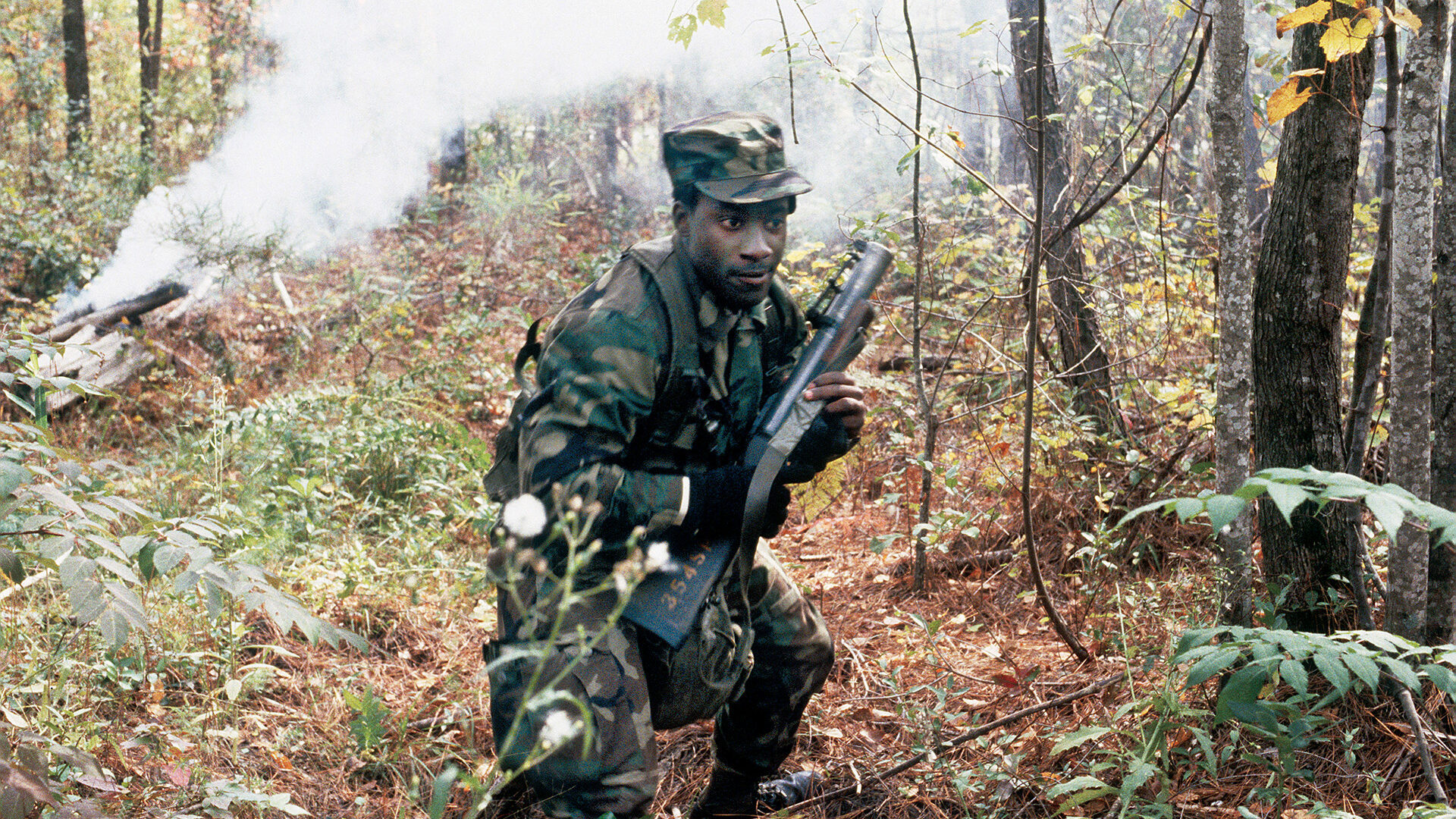
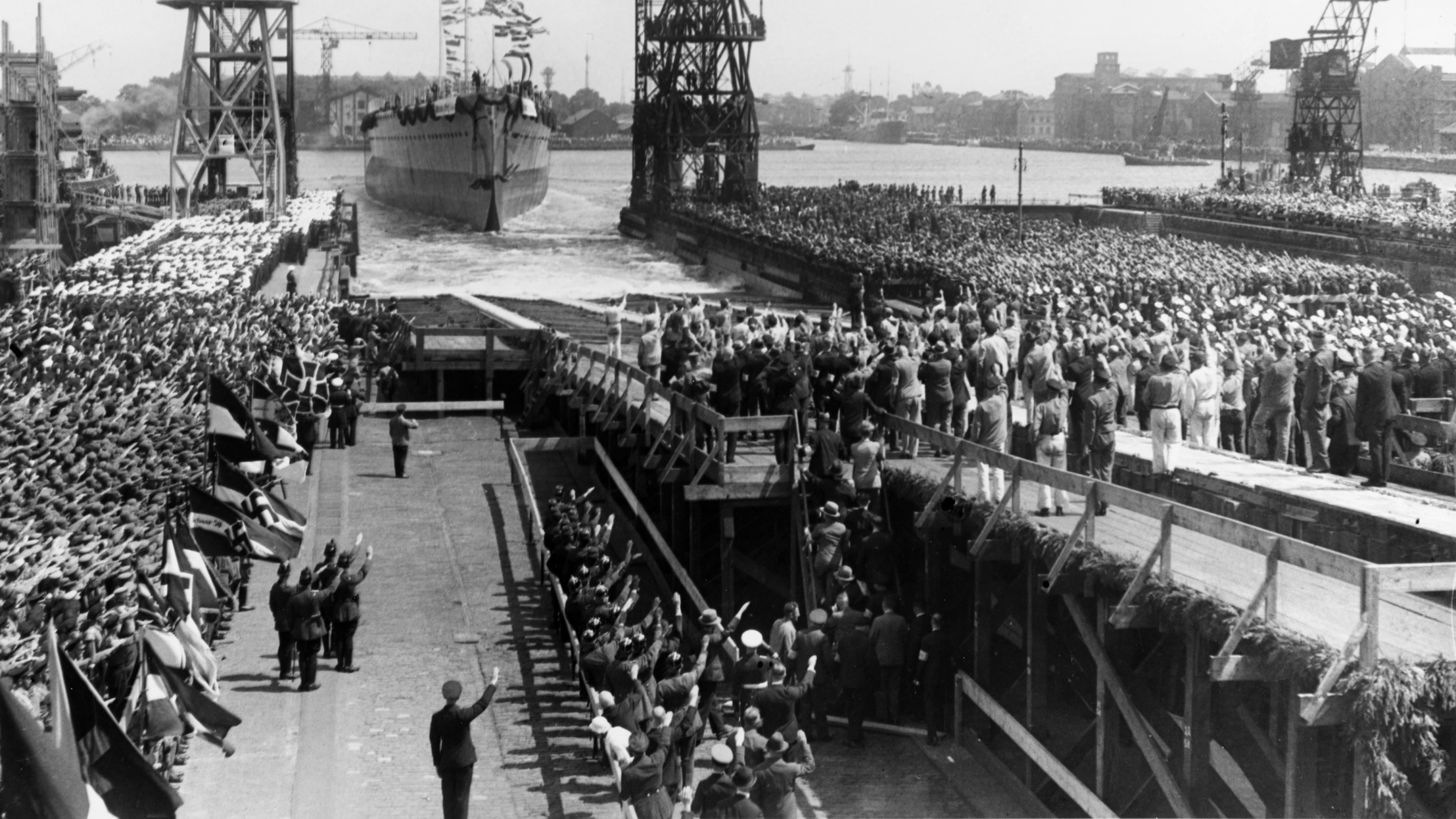
Was Katharina Friebe ever inform about her husband’s fate?
“Günter Friebe was from Großgiesmannsdorf in Upper Silesia. Three weeks before this fateful trip he had said to me: ‘Listen to me, and pay attention to what I have to say. I’m not going to come back from this war. I will fall here. My wife Maria recently gave me a daughter. Her name is Katharina. I just got this message the day before yesterday. You have to promise me that you will inform her about my fate.’”
It’s neat to see how the Allies absolutely crushed the Germans in France. Who cares how many Allies died in France?? The youth of Germany are buried there by the tens of thousands.